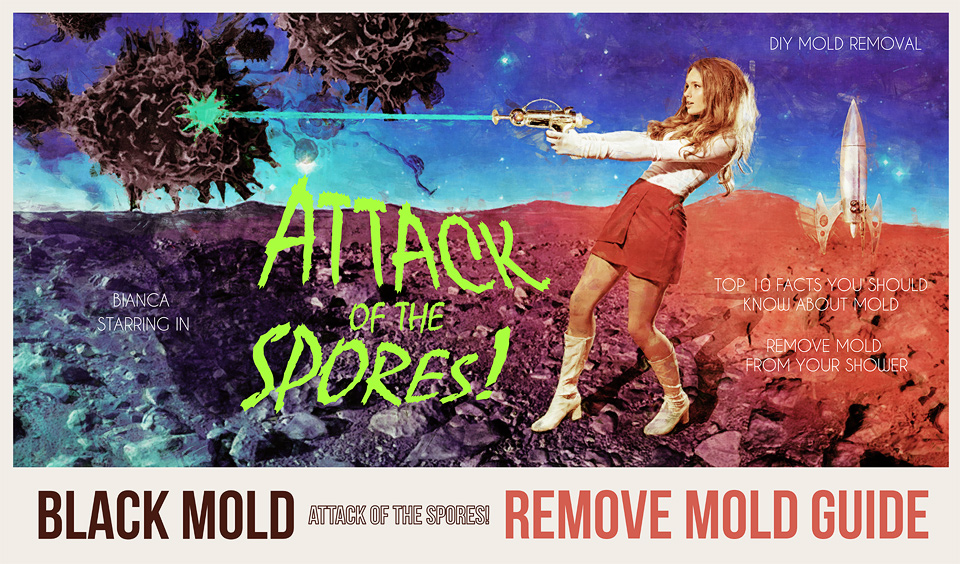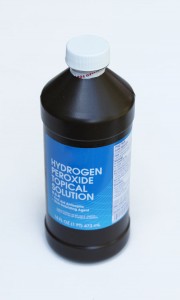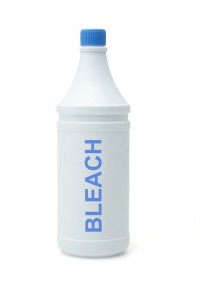The Comprehensive List of Ways to Kill and Remove Mold
Black mold, or any other mold for that matter, can be harmful. Fortunately, there are many different ways to get rid of mold. Here is a list of the various cleaners and solutions you can use to remove mold in your home. Most of these solutions use everyday household products that you probably already have. Please remember, the rule of thumb for do it yourself mold removal is if the mold is 10 square feet or less in size. If it is larger than that, you may want to consider hiring a professional. For tips on making sure you hire a good professional, click here. Also, if you are going to do it yourself, check out our do it yourself page for important safety tips.

Since most of us don’t have a ray gun like our intrepid space explorer Bianca, below are common household items that can help you battle that unwanted mold.
How to Kill Mold with Bleach
Probably the most thought of solution when considering how to get rid of mold, but there are some drawbacks to bleach:
Recipe
Bleach-Water Solution (1 gallon of water to 1 cup of bleach, or 1 part bleach to 16 parts water). Bleach with detergent solution – (Recommended for porous surfaces, such as wood, drywall, and fabrics – 1 part household detergent, 10 parts bleach, and 20 parts water)
Surfaces
Non pourous surfaces when used with water. Porous surfaces when combined with detergent. Caution: don’t mix bleach with any product that has ammonia because it produces a toxic gas when combined.
Application
Spray, or apply with a rag to the mold, not too heavily. Wait a 5 minutes (longer for stubborn situations), then scrub with a brush, rag, or other somewhat abrasive tool, being careful not to scratch or destroy the material that you are trying to protect. Wipe clean with a damp rag.
Cautions
Bleach is toxic to humans, dangerous fumes, environmentally toxic when released into nature. Never mix with ammonia. Keep room well ventilated when using bleach. Bleaches fabrics!
How it works
Chlorine bleach contains hypochlorite, which forces the mold proteins combine. This alters their form and destroys the mold. This is the same process that heat causes to proteins (think of how an egg changes when it is cooked). So essentially, bleach “cooks” the mold, without using heat. For more information on this process, visit this article from livescience.com.
Advantages
Effective in getting rid of mold and killing other microbes on the surfaces. Also effective at removing stains, which is advantageous for tile grout, caulk, or other areas that need stains removed.
Disadvantages
Dangerous fumes, toxic, and does not work well with porous surfaces such as wood or drywall unless combined with a detergent. Do to bleach’s molecular structure, it only stays on the surface and doesn’t absorb into porous material unless aided by surfactants (detergents).
How to Get Rid of Mold with Vinegar
Vinegar is a natural alternative to bleach or other strong chemicals. It is not toxic and is won’t harm the environment.
Recipe
Distilled white vinegar (straight, not diluted with water)
Surfaces
Any surface, but use sparingly on pourous surfaces
Application
Spray or apply with a rag to the mold, not too heavily. Wait 10-15 minutes, then spray or apply again and scrub with a brush, rag, or other somewhat abrasive tool, being careful not to scratch or destroy the material that you are trying to protect. Wipe clean with a damp rag.
Cautions
Strong odor, but will dissipate.
How it works
Vinegar is acidic, with a ph of about 2.5. The acid deforms the shape of the proteins on the mold, which breaks down the mold’s structure and kills it.
Advantages
Natural, non-toxic cleaner. When not completely rinsed away, the low ph of vinegar helps prevent mold from returning.
Disadvantages
Not as strong as bleach or commercial products.
How to Get Rid of Mold with Baking Soda
Baking Soda is a convenient solution to mold problems. It is inexpensive, helps prevent future mold growth, and deodorizes.
Recipe
Baking Soda -Detergent Solution: 1/2 cup baking soda, 1 cup water, 1 Tbsp mild liquid detergent
Baking soda-Water Solution: ¼ to ½ Tbsp of baking soda to a spray bottle of water
Surfaces
Any surface, but use sparingly on pourous surfaces if it can’t dry out completely. Works best on non-pourous surfaces like tile and vinyl.
Application
Spray area thoroughly and wipe with rag or scrub with appropriate semi-abrasive tool. Wipe away. Spray lightly again with the baking soda-water solution,and let dry thoroughly, the solution will naturally discourage new mold growth.
Cautions
This is a low-risk substance. No strong fumes or odors, non-toxic, and safe for the environment.
How it works
Baking soda has a ph of about 8, which is too high for mold to thrive. The high ph not only kills mold, but discourages new mold from coming back.
Advantages
No toxic fumes, environmentally safe, deodorizes, inexpensive.
Disadvantages
Not as strong as bleach, commercial products, or even some other natural cleaners.
How to Remove Mold with Hydrogen Peroxide
Hydrogen Peroxide has multiple benefits in addition to mold removal. It also kill viruses and bacteria. It also penetrates the surface of material better than bleach, which makes it good for materials like fabric and wood.

Hydrogen peroxide can help get ride of that stubborn mold — be sure to read instructions and warnings on the bottle.
Recipe
Straight 3% hydrogen peroxide, or 10% for difficult mold, you can also add it 50/50 to vinegar or baking soda, which will aid in preventing the mold from returning.
Surfaces
Safe to use on all materials, both porous and nonpourous. Keep in mind that hydrogen peroxide is has a mild bleaching effect, so it can lighten colors on fabrics. Do a test spot first to see how it works.
Application
Put in spray bottle (keep out of light). Spray heavily on mold and let sit for at least 10 minutes, preferably longer. Scrub the area and wipe down. If its a fabric, place it outside in the sun to dry.
Cautions
Protect from eyes, and read the label on the bottle.
How it works
Hydrogen peroxide reacts by releasing oxygen at a rapid rate, which in turn oxidizes the surface of the mold and decomposes it.
Advantages
Hydrogen Peroxide is also an antiviral, antibacterial, non-toxic, and is in-expensive and leaves no residue or fumes. Penetrates the surface of material better than bleach.
Disadvantages
Scientific studies show that bleach is a more powerful disinfectant and is used more than hydrogen peroxide in hospital cleaners, so while it kills mold, viruses, and bacteria, it may not do as effectively as bleach.
How to Kill Mold with Borax
Borax is the un-sung hero of mold removal. It is natural, inexpensive, and doesn’t produce toxic fumes. It is also effective at killing germs.
Recipe
1 Cup of Borax to 1 Gallon of water
Surfaces
Safe to use on all materials, both porous and nonpourous. If you are unsure about using borax, just test it out in a small area first.
Application
Apply the solution to the offending area, be careful not to use too much on a porous material that absorbs water, this will saturate the material and can cause other moisture problems. Scrub area with rag or somewhat abrasive material, such as a scrub brush until mold is removed. The level of abrasive material depends on the surface you are working with. For example, you might use a rag for leather or furniture, and a scrub brush for concrete or grout. Wipe area clean and dry the area. No need to rinse the area because borax inhibits any new growth. This is how to get rid of mold permanently, or at least delay its reappearance for a longer time.
Cautions
Don’t eat it, otherwise it is safe.
How it works
Borox has a ph of about 9.3. Since most molds thrive in a ph environment range of 3 to 7, Borax creates an environment that kills the mold. Also, since some common molds even grow in more acidic environments (below ph 3), borax can be more effective that acidic solutions, such as vinegar.
Advantages
No toxic fumes or chemicals, it cleans and kills bacteria/germs, and is inexpensive.
Disadvantages
No significant drawbacks. Commercial cleaners may be more concentrated and therefore work more effectively on tougher jobs.
Here is an informative video from the History Channel on some important issues regarding mold. Worth watching !


